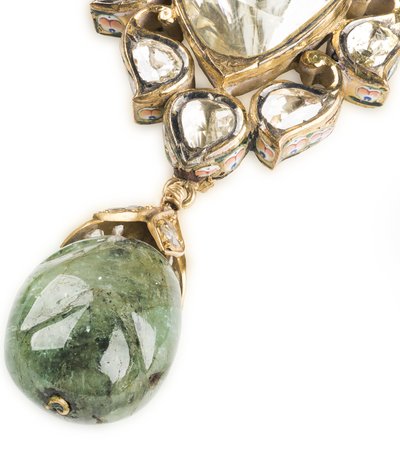For two and a half centuries, Mamluk rulers oversaw an empire that stretched south from Syria to Nubia, and east from Libya to the Arabian Peninsula. The tremendous wealth from trade of the Mamluk sultanate was reflected in the patronage of religious and civic construction, especially mosques and madrasas. The large spaces of these buildings required ample lighting, leading to the production of a relatively high number of hanging lamps in Egypt and Syria. Examples that survive today serve as tangible reminders of this era's significant architectural and artistic achievements.
This particular lamp was most probably made for the monumental mosque and madrasa complex of Sultan Al-Malik Al-Zahir Sayf al-Din Barquq in Cairo, which was completed in 788 AH/1386 CE. It presents a typical decoration for glass lamps produced during that period, with inscriptions in blue enamel and gilding on the neck, and — in reverse — a blue background with a floral interlacing motif on the globe-shaped body. The red outlined calligraphy on the body of the lamp would originally have been filled with gold.
Both the lamp’s decoration and shape may have been inspired by Mamluk metalwork, which can be seen as one of the greatest achievements of medieval Islamic craftsmanship.







